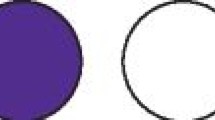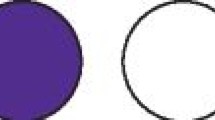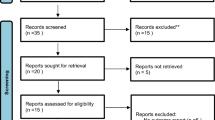Abstract
Data sources Searches were performed using broad search terms and suitable Boolean operators and Medical Subject Headings terms on the electronic databases PubMed (US National Library archive), EBSCOHost (Dentistry and Oral Sciences) (US Corporate Research Database), Scopus (Elsevier Archive) and the Cochrane Database for Systematic Reviews with no relevant time limit.
Study selection Randomised control trials were included where adults were participants and using miswak sticks to brush was the independent variable. The primary outcome reviewed was the effect on periodontal health, with secondary outcomes including oral health practices. Exclusion criteria were applied to studies including patients with orthodontic appliances.
Data extraction and synthesis Data extraction was led by a single author, with further authors (where necessary) assessing accuracy and appropriateness. Data extracted included first author, publication year, study design and setting, sample size, description of the participant, the intervention and comparison, clinical measurements, assessment interval and wash-out period. An I2 test with confidence intervals was performed, showing the included studies to display heterogeneity in methodology and outcome measures. As such, a random effects model was used for the meta-analysis of effect size. Further subgroup analysis of the included papers was completed and presented in a forest plot format. The Cochrane risk of bias tool was employed.
Results In total, 150 abstracts were screened, with ten RCTs included and nine utilised in a descriptive meta-analysis. The findings claimed that miswak offered similar outcomes to toothbrushing when considering mean plaque score (p = 0.08; SMD: 0.39 and 95% CI: 0.05-0.83) and mean gingivitis score (p = 0.37; SMD: 0.13, and 95% CI: 0.16-0.43). A further significant secondary outcome was noted, showing reduced mean plaque scores (p = 0.01; SMD: 0.68, and 95% CI: 0.14-1.22) and reduced gingivitis score (p = 0.04; SMD: 0.66, and 95% CI: 0.03-1.29) when miswak was used in addition to toothbrushing.
Conclusions Miswak sticks may offer similar plaque reduction to brushing and may reduce plaque-induced gingivitis when used as an adjunct to toothbrushing. However, more evidence is required in this area.
This is a preview of subscription content, access via your institution
Access options
Subscribe to this journal
Receive 4 print issues and online access
$259.00 per year
only $64.75 per issue
Buy this article
- Purchase on Springer Link
- Instant access to full article PDF
Prices may be subject to local taxes which are calculated during checkout
Similar content being viewed by others
References
Sanz M, Herrera D, Kebschull M et al. Treatment of stage I-III periodontitis - The EFP S3 level clinical practice guideline. J Clin Periodontol 2020; DOI: 10.1111/jcpe.13290.
Almas K, al-Lafi T R. The natural toothbrush. World Health Forum 1995; 16: 206-210.
Karia R, Kelleher M G. Bizarre tooth surface loss and the Miswak stick. Dent Update 2014; 41: 355-364.
Walsh T, Worthington H V, Glenny A-M, Marinho V C, Jeroncic A. Fluoride toothpastes of different concentrations for preventing dental caries. Cochrane Database Syst Rev 2019; DOI: 10.1002/14651858.CD007868.pub3.
Author information
Authors and Affiliations
Ethics declarations
The authors declare no conflicts of interest.
Rights and permissions
About this article
Cite this article
Scott, J., Marshman, Z. Does the use of miswak reduce plaque and gingivitis among adults?. Evid Based Dent 23, 152–153 (2022). https://doi.org/10.1038/s41432-022-0833-y
Received:
Accepted:
Published:
Issue Date:
DOI: https://doi.org/10.1038/s41432-022-0833-y
This article is cited by
-
Miswak misuse
British Dental Journal (2023)



